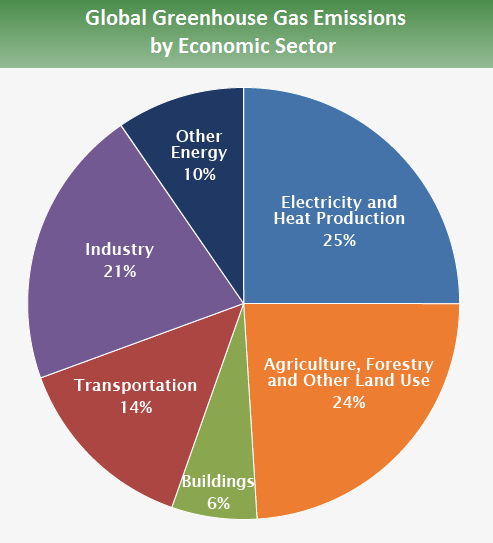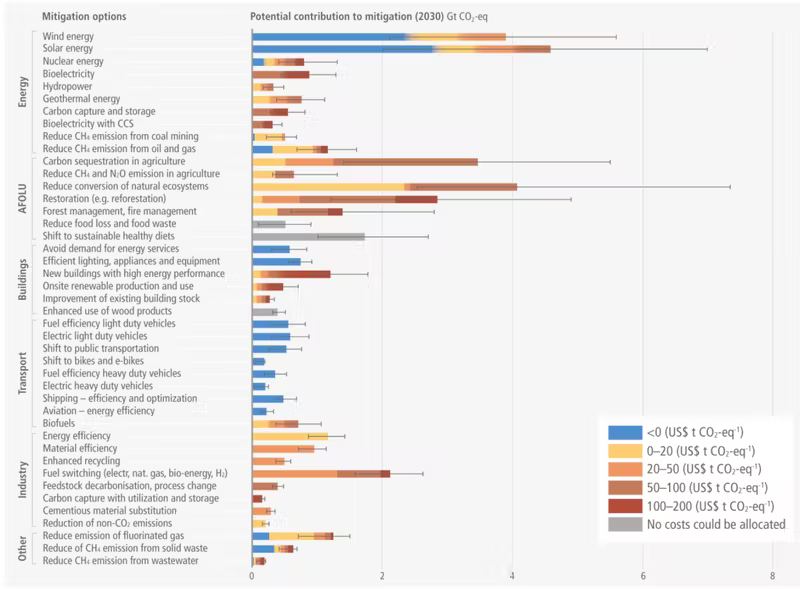Posts
Last edited: Aug 1, 2022, 1:06pm EDT
Anthropocene Calamity, part 4: Your pie chart looks different than others
This is part 4 of an 11 part series. For the introductory post to set the tone, please see Holy shit things are super bad.
In part 2, we discussed what I think the average person should do. In part 3, we talked about how we’re way past time squabbling about what will have the most impact, and we must radically reign in emissions everywhere, now.
But it’s extremely unlikely that you, dear reader, are average! The average family has 2.5 kids but also no family has 2.5 kids! More importantly, what you can do that will make the most impact is not the same as others. The pie chart of what things you can do that make the most impact is unique!
So let’s talk about what you can do. You and me. Let’s take a look at that global emissions chart again:

I don’t know about you, but I’m going to have very little impact on agriculture and land use. The best I can do there is support products, services, and companies that are making a firm investment in reducing emissions. That’s something that is necessary that I do, but it’s not a lot.
But if your uncle is a farmer that manages a couple hundred acres of cattle grazing, you can blow my agricultural efforts out of the water if you persuade him and his friends to install biodigesters to reduce methane emissions from manure and replace other energy sources with sustainable biogas, just for one example. Your connection to your uncle is an angle that allows you to make an outsized, much-more-than-average impact, even though manure methane emissions aren’t anywhere near the top contributor to the planet’s warming!
Or let’s say your friend works at an HVAC company - or you do! It’s time to be obnoxious about getting the company to offer specials on green heating installs. “Buildings” is only 6% of the pie chart, but for your personal pie chart, getting Jon’s Heating and Cooling to get 10 customers to install heat pumps might be the most impactful thing you can personally do. It doesn’t matter that Transportation is 14% and Buildings is only 6%. Jon’s Heating and Cooling shouldn’t be focusing on rail infrastructure. It should be focusing on reducing building emissions, because that is Jon’s Heating and Cooling’s maximum leverage.
Each person has a point of leverage, and of course the more influence you have the more leverage you have in your area of influence, but don’t let having only a small amount of influence stop you - it is still likely that for at least some area, you have a connection to someone that gives you a slightly greater than average amount of leverage.
If you’re interested in hints for things to consider in your own life, here are the things the IPCC says we need to do:

Alternatively, you can check out Project Drawdown’s table of solutions. Project Drawdown’s list inspired the amazing project Recoolit, which is focusing on removing extremely potent refrigerant greenhouse gases safely. You can read the Recoolit manifesto if you want to be inspired.
As a personal example, the average person in the cryptocurrency industry should absolutely not spend time arguing about wind power details. They need to get their own house in order. See part 5.
- Part 1: Holy shit, things are super bad
- Part 2: Are you yelling until your voice is hoarse?
- Part 3: Every part of the pie must shrink
- Part 4: Your pie chart looks different than others
- Part 5: Sell Bitcoin, Save Lives
- Part 6: Are you spending your attention and money well?
- Part 7: It’s seat belt time
- Part 8: Climate models 101
- Part 9: Project Lifeboat
- Part 10: A personal update
- Part 11: Humanity can survive!
Thanks to Christy Olds, Jeff Wendling, and Moby von Briesen for advice and feedback on early drafts.